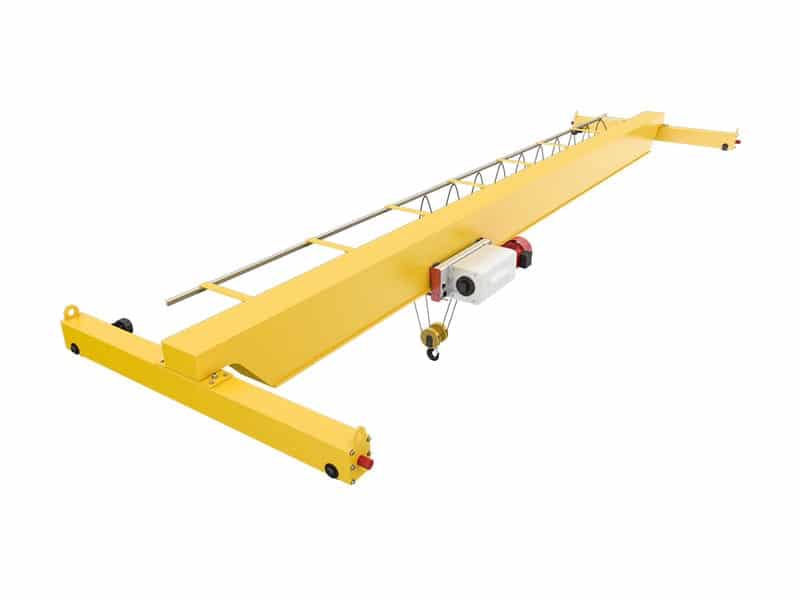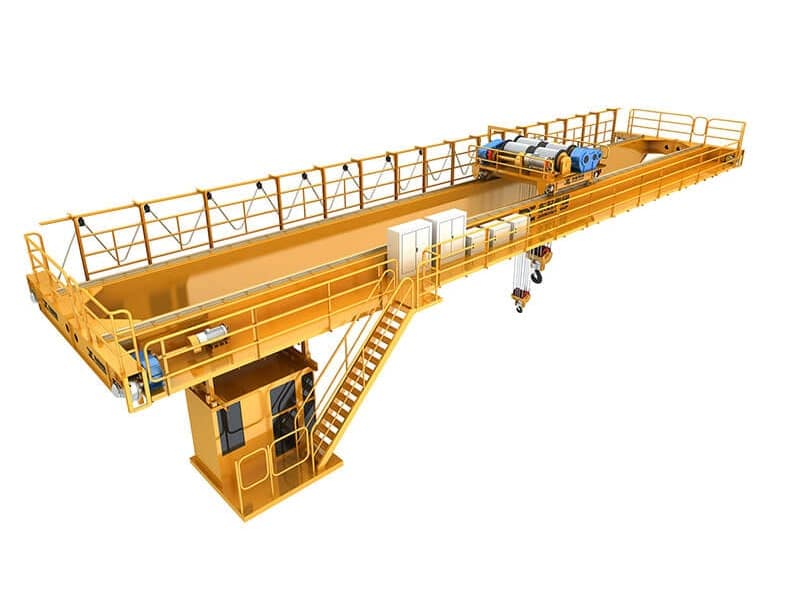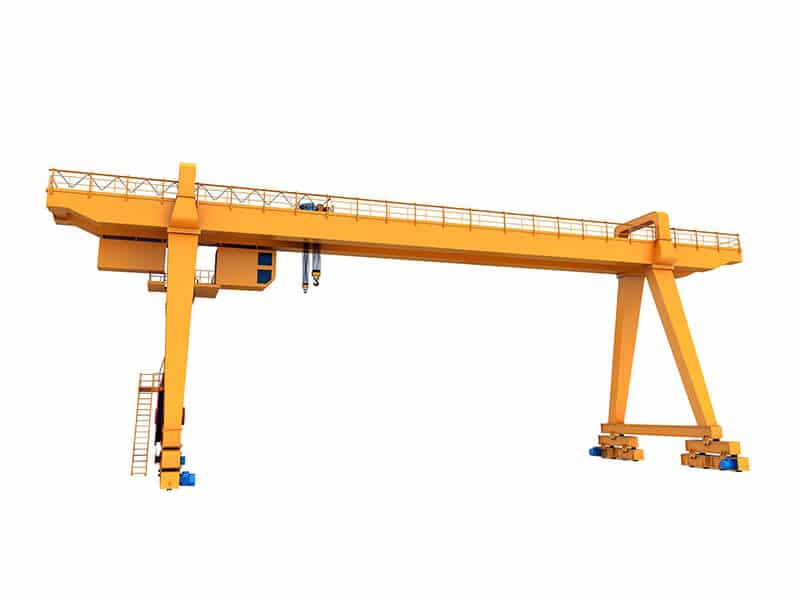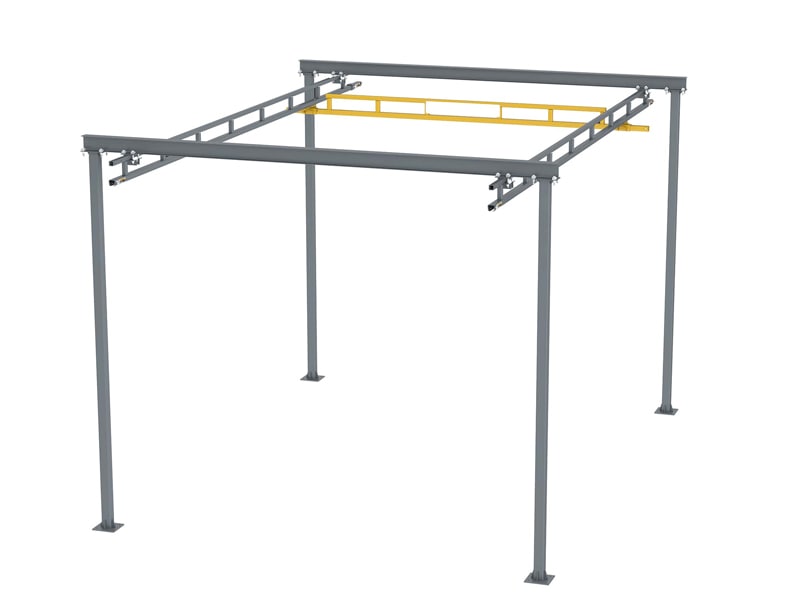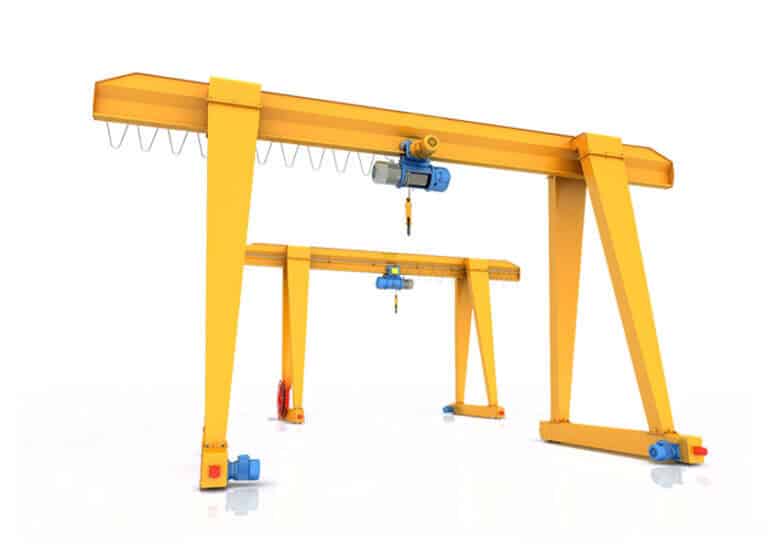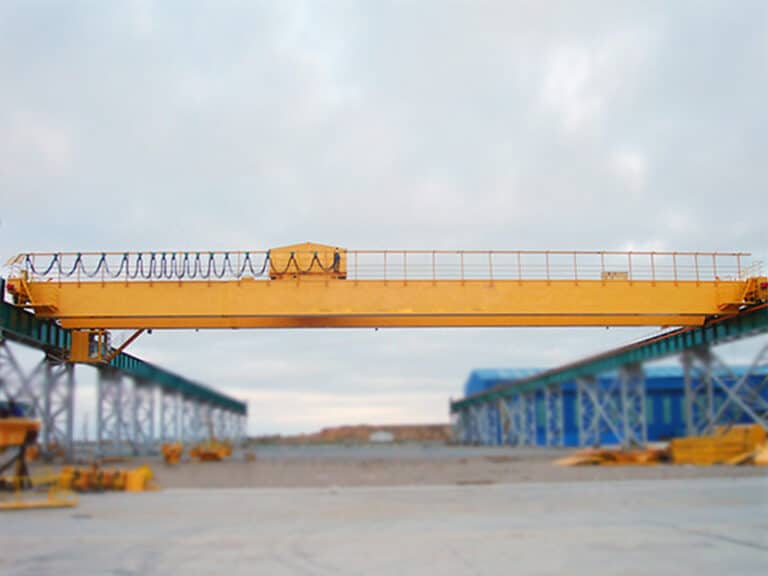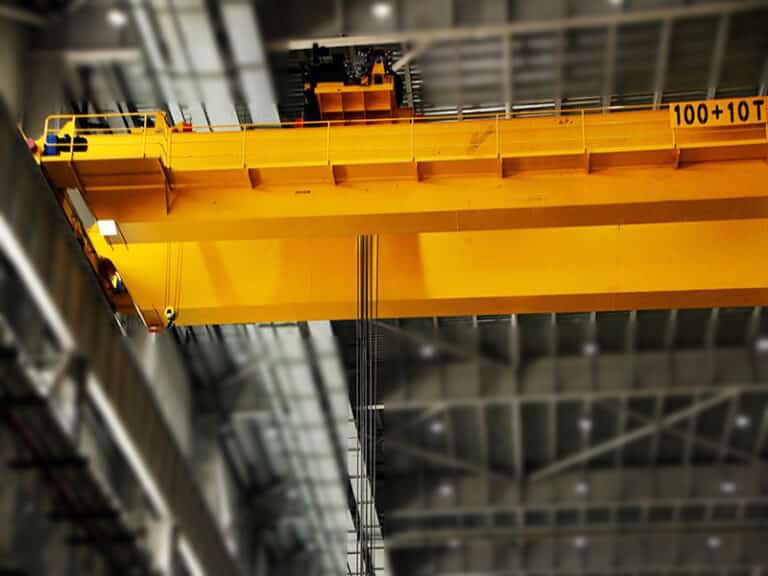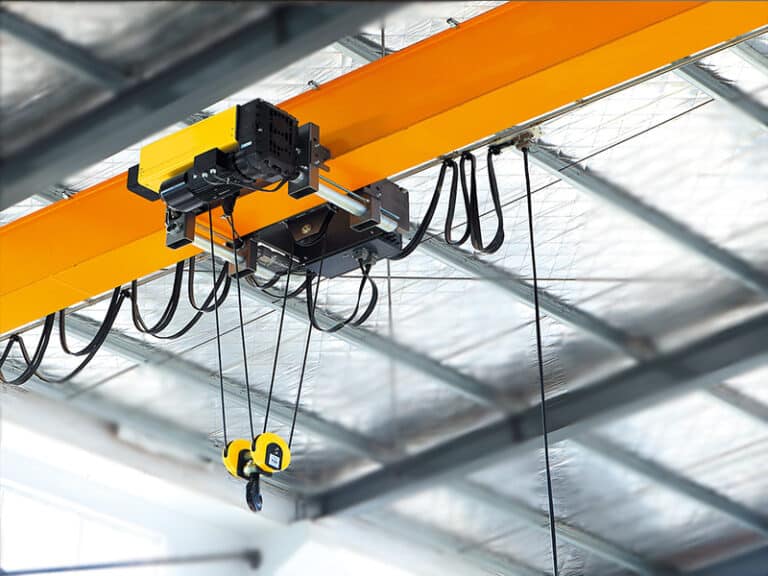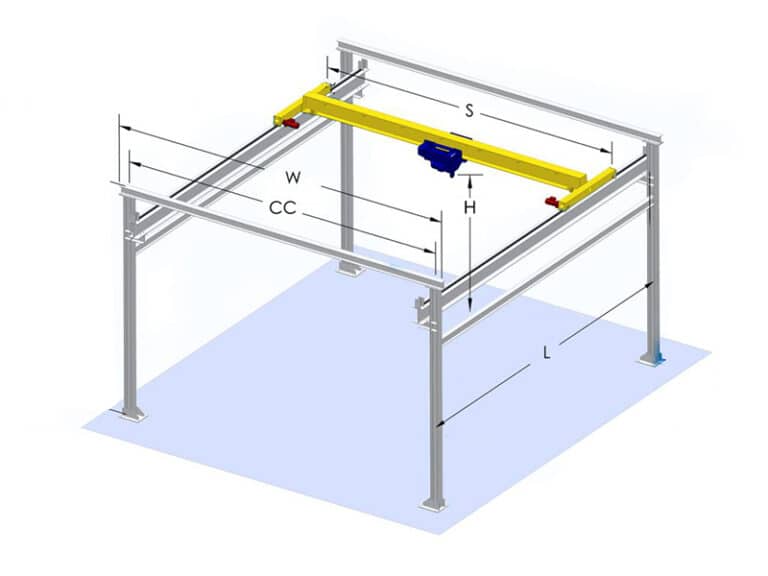Guindastes EOT são equipamentos essenciais em vários ambientes industriais, como a fabricação, construção, e envio. Eles são projetados para levantar e transportar cargas pesadas com precisão e eficiência, tornando-os essenciais para melhorar a produtividade e a segurança no local de trabalho.
Neste artigo, exploraremos os principais fatores envolvidos no projeto de um guindaste EOT, os diferentes tipos de guindastes eot disponíveis, bem como a estrutura, elétrico, e componentes mecânicos que compõem esses guindastes.
Introdução
Eot (Viagem de sobrecarga elétrica) Guindastes são um tipo de equipamento de manuseio de material comumente usado em ambientes industriais. Eles foram projetados para levantar e transportar cargas pesadas horizontalmente dentro de um espaço de trabalho.
Os guindastes EOT revolucionaram a maneira como os materiais são movidos na fabricação, construção, e indústrias de navegação. Sua capacidade de mover cargas grandes e pesadas com precisão e eficiência melhorou significativamente a produtividade e a segurança no local de trabalho.
A história do design do guindaste eot remonta ao início do século 19, quando os guindastes foram usados pela primeira vez em ambientes industriais. Os primeiros guindastes foram operados manualmente, Mas à medida que a tecnologia progredia, Motores elétricos foram introduzidos para alimentar esses guindastes. Hoje, Guindastes eot vêm em vários tipos e desenhos, variando de viga única a viga dupla, pórtico, e os guindastes de eot sublunados.
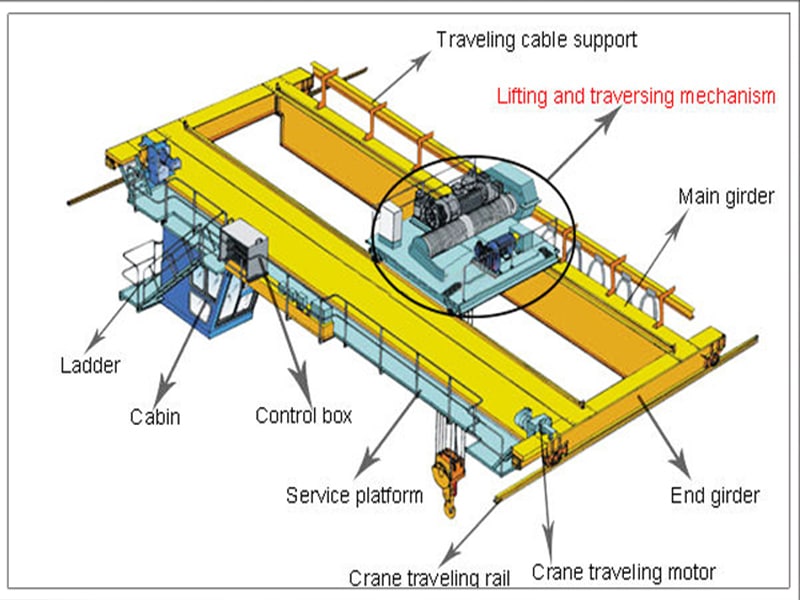
Fatores a serem considerados ao projetar
Ao projetar um guindaste eot, Vários fatores precisam ser levados em consideração para garantir o desempenho e a segurança ideais. Aqui estão os principais fatores a serem considerados:
Capacidade de carga:
A capacidade de carga de um guindaste EOT é um dos fatores mais críticos a serem considerados durante o processo de projeto. Determina o peso máximo que o guindaste pode levantar e transportar com segurança. A capacidade de carga do guindaste deve ser cuidadosamente calculada com base na carga mais pesada que o guindaste lidará no ambiente operacional.
Extensão e altura do guindaste:
A extensão e a altura do guindaste se referem à distância entre as estruturas de suporte do guindaste e a altura máxima na qual o guindaste pode levantar cargas. Essas dimensões são críticas para garantir que o guindaste possa alcançar e mover cargas de maneira eficaz no ambiente operacional. A extensão e a altura do guindaste devem ser determinadas com base no tamanho da área de trabalho e na altura máxima das cargas a serem levantadas.
Ambiente operacional:
O ambiente operacional é outro fator crítico a considerar ao projetar um guindaste EOT. O ambiente em que o guindaste operará determinará o tipo de guindaste necessário, bem como os materiais usados em sua construção. Fatores como temperatura, umidade, pó, e elementos corrosivos devem ser levados em consideração para garantir a longevidade e o desempenho do guindaste.
Classificação de impostos:
A classificação de serviço de um guindaste eot refere -se à frequência e por quanto tempo o guindaste estará em uso. Este fator determina as especificações de projeto para o guindaste e os materiais utilizados em sua construção. A classificação de serviço é baseada no número de ciclos operacionais por hora, a duração dos ciclos operacionais, e o peso das cargas sendo levantadas.
Movimento de guindaste e controle:
O sistema de movimento e controle de um guindaste EOT é crucial para seu desempenho e segurança gerais. O sistema de movimento se refere à maneira como o guindaste se move e a velocidade em que se move, Enquanto o sistema de controle rege a operação geral do guindaste. Fatores como o tipo de mecanismo de guia, energia motora, e o sistema de frenagem deve ser levado em consideração durante o processo de design para garantir o desempenho e a segurança ideais.
Resumindo, Projetar um guindaste EOT requer uma compreensão completa do ambiente operacional, Capacidade de carga, extensão e altura do guindaste, Classificação de impostos, e sistema de movimento e controle. Esses fatores devem ser cuidadosamente considerados para garantir que o guindaste possa ter um desempenho de maneira eficiente e segura no espaço de trabalho pretendido.
Tipos de projetos de guindaste eot
Guindastes eot vêm em vários tipos e desenhos, cada um com seus recursos e recursos únicos. Aqui estão os quatro tipos mais comuns de projetos de guindaste eot:
Guindaste eot de viga única:
Guindastes de viga única eot são o tipo de guindaste eot mais comumente usado. Eles são projetados com um único feixe que suporta a guiça e o carrinho. Esses guindastes são ideais para cargas leves a médias e são adequadas para uso em workshops, armazéns, e linhas de produção. Guindastes de viga única eot são mais acessíveis e mais fáceis de instalar em comparação com outros tipos de guindastes.

Guindaste eot de viga dupla:
Guindastes eot de viga dupla são projetados com duas vigas que suportam a talha e o carrinho. Esses guindastes são adequados para aplicações pesadas e podem lidar com cargas maiores em comparação com guindastes de viga única eot. Guindastes eot de viga dupla são comumente usados em moinhos de aço, usinas de energia, e estaleiros.

Crane eot sublungo:
Os guindastes eto, que permite o máximo de uso do espaço disponível. Esses guindastes são ideais para aplicações baixas de alteração e são comumente usadas em áreas onde o espaço é limitado, como oficinas e armazéns.
Gantry Eot Crane:
Os guindastes de pórtico são projetados com pernas que suportam o guindaste e permitem que ele se mova ao longo de uma pista. Esses guindastes são adequados para aplicações ao ar livre, como portas de remessa e canteiros de obras. Os guindastes de pórtico são altamente versáteis e podem lidar com uma ampla gama de cargas.
Para concluir, Guindastes eot vêm em vários tipos e desenhos, cada um com seus recursos e recursos únicos. Ao selecionar o tipo de guindaste eot para usar, Fatores como capacidade de carga, período, e altura, e o ambiente operacional deve ser levado em consideração para garantir o desempenho e a segurança ideais.
Guindastes aéreos de viga única
√ Extensão padrão: 6 para 30 eu
Os sistemas de manuseio de materiais para serviços leves são usados principalmente em oficinas e armazéns para serviços leves, como na indústria têxtil e na indústria alimentícia.
Guindastes aéreos de viga dupla
√ Extensão padrão: 6 para 30 eu
Usado principalmente em fábricas, armazéns, e outras oficinas internas de estrutura de aço.
Guindastes de pórtico
É usado principalmente para carregamento de carga, descarregando, e instalação em pátios de armazenamento abertos, docas, usinas de energia, portos, e estações ferroviárias.
Sob guindastes em execução
Projeto estrutural de guindastes eot
O projeto estrutural de um guindaste eot é crucial para seu desempenho e segurança. Here are the key factors to consider when designing the structure of an EOT crane:
Materials used for the crane structure:
The materials used for the crane structure are essential to its strength and durability. Common materials used in EOT crane construction include structural steel, cast iron, and aluminum. The choice of material will depend on the load capacity and environmental conditions of the crane’s intended workspace.
Design considerations for the crane girder and hoist trolley:
The crane girder and hoist trolley are the primary load-bearing components of an EOT crane. The design of these components must be robust enough to support the weight of the loads being lifted. The shape and size of the girder and trolley will depend on the type of crane and its load capacity. Fatores como deflexão, flexão, e a fadiga deve ser considerada durante o processo de design para garantir a longevidade do guindaste.
Recursos de segurança, como interruptores de limite e proteção contra sobrecarga:
Os guindastes EOT devem ter recursos de segurança adequados para evitar acidentes e proteger o operador e a carga sendo levantada. Os recursos de segurança comuns incluem interruptores de limite que impedem o guindaste de viajar além da área designada, Sistemas de proteção contra sobrecarga que impedem o guindaste de levantar cargas além de sua capacidade, e botões de parada de emergência que fecham as operações do guindaste em caso de emergência.
Resumindo, O design estrutural de um guindaste eot é fundamental para seu desempenho e segurança. Fatores como os materiais usados para a estrutura do guindaste, Considerações de design para a viga de guindaste e carrinho de guindaste, e os recursos de segurança devem ser levados em consideração durante o processo de design para garantir que o guindaste possa ter um desempenho de maneira eficiente e segura no espaço de trabalho pretendido.
Projeto elétrico e mecânico de guindastes EOT
Os componentes elétricos e mecânicos de um guindaste EOT são vitais para seu desempenho e segurança. Aqui estão os principais fatores a serem considerados ao projetar os sistemas elétricos e mecânicos de um guindaste EOT:
Componentes elétricos e fiação:
Os guindastes EOT são alimentados por sistemas elétricos que incluem componentes como motores, interruptores, e fiação. A fiação e os componentes elétricos devem ser projetados para atender aos requisitos de carga e dever do guindaste. O isolamento e o aterramento adequados são essenciais para evitar riscos elétricos.
Seleção e controle do motor:
A seleção do motor para um guindaste EOT é fundamental para o seu desempenho. O motor deve ter energia suficiente para levantar a carga e mover o guindaste ao longo da viga da pista. O sistema de controle do motor deve ser projetado para fornecer movimento suave e preciso do guindaste. A seleção de um sistema de motor e controle deve levar em consideração a capacidade de carga, Requisitos de velocidade, e classificação de serviço do guindaste.
Sistemas de frenagem:
O sistema de frenagem é essencial para a segurança de um guindaste eot. O sistema deve ser projetado para interromper o guindaste de maneira rápida e suave em caso de emergência. Tipos comuns de sistemas de frenagem usados em guindastes EOT incluem freios mecânicos, freios hidráulicos, e freios elétricos.
Sistemas de lubrificação:
O sistema de lubrificação é fundamental para a longevidade de um guindaste eot. O sistema deve ser projetado para fornecer lubrificação adequada aos componentes móveis do guindaste, como os rolamentos e engrenagens. A lubrificação adequada ajuda a reduzir o atrito e o desgaste nos componentes do guindaste, o que melhora seu desempenho e estende sua vida útil.
Para concluir, O projeto elétrico e mecânico de um guindaste eot é fundamental para seu desempenho e segurança. Fatores como a seleção de componentes elétricos e fiação, Seleção e controle do motor, sistemas de frenagem, e os sistemas de lubrificação devem ser levados em consideração durante o processo de design para garantir que o guindaste possa ter um desempenho de maneira eficiente e segura na área de trabalho pretendida.
Manutenção e inspeção de guindastes EOT
Manutenção e inspeção regulares são cruciais para a operação segura e eficiente de um guindaste EOT. Aqui estão alguns fatores -chave a serem considerados ao projetar um plano de manutenção e inspeção para um guindaste EOT:
Importância da manutenção e inspeção regulares:
Manutenção e inspeção regulares ajudam a evitar quebras e prolongar a vida útil de um guindaste eot. Também garante que o guindaste opere com segurança e eficiência. Um cronograma regular de manutenção e inspeção deve ser estabelecido e seguido para evitar tempo de inatividade inesperado e reparos caros.
Questões comuns a serem observadas e como abordá -las:
Questões comuns que podem surgir com um guindaste eot incluem componentes desgastados, partes desalinhadas, e problemas elétricos. Esses problemas podem ser detectados através de inspeções regulares, e os reparos oportunos podem ser realizados para evitar mais danos. A lubrificação regular de peças móveis e a limpeza de componentes elétricos também podem impedir que os problemas ocorram.
Práticas recomendadas para manter a longevidade do guindaste:
Para garantir a longevidade de um guindaste eot, é essencial seguir as melhores práticas, como:
Inspeção regular de componentes críticos, como a guia, freios, e vigas da pista
Lubrificação regular de peças móveis
Limpeza e manutenção adequadas de componentes elétricos
Reparo oportuno de componentes desgastados
Implementação de medidas de segurança, como interruptores de limite e proteção contra sobrecarga
Treinamento de operadores e equipe de manutenção sobre o uso e manutenção adequados do guindaste
Para concluir, Manutenção e inspeção regular de um guindaste EOT são críticas para garantir sua operação segura e eficiente. Questões comuns devem ser abordadas prontamente, e as melhores práticas devem ser seguidas para manter a longevidade do guindaste. Um guindaste bem conservado não apenas economiza dinheiro em reparos e tempo de inatividade, mas também fornece uma solução segura e eficiente para manuseio de materiais em ambientes industriais.
Conclusão
Para concluir, Projetar um guindaste EOT requer consideração cuidadosa de vários fatores, incluindo capacidade de carga, período, o ambiente operacional, Classificação de impostos, e movimento e controle do guindaste. Escolhendo o tipo apropriado de design de guindaste eot, como viga única, viga dupla, sublung, ou pórtico, depende de requisitos e limitações específicos.
As considerações de projeto estrutural incluem os materiais utilizados para a estrutura do guindaste, Considerações de design para a viga de guindaste e carrinho de guindaste, e recursos de segurança, como interruptores de limite e proteção contra sobrecarga. Considerações de projeto elétrico e mecânico incluem componentes elétricos e fiação, Seleção e controle do motor, sistemas de frenagem, e sistemas de lubrificação.
Manutenção e inspeção regular de guindastes EOT são essenciais para garantir sua operação segura e eficiente. Questões comuns devem ser abordadas prontamente, e práticas recomendadas, como inspeção regular de componentes críticos, Lubrificação e limpeza adequadas, e a implementação de medidas de segurança deve ser seguida para manter a longevidade do guindaste.
Os guindastes eot desempenham um papel crucial em ambientes industriais, e seu design e manutenção adequados podem ter um impacto significativo nas operações. Um guindaste bem projetado e bem conservado não apenas economiza dinheiro em reparos e tempo de inatividade, mas também fornece uma solução segura e eficiente para manuseio de materiais.

